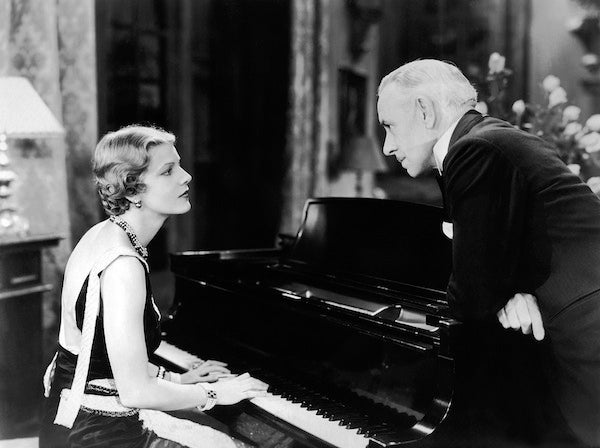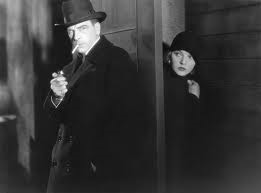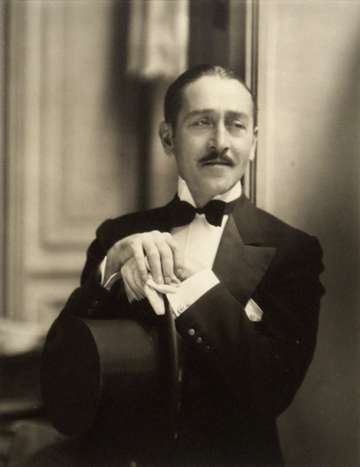
In early March, a few hundred brave souls fought their way through blinding snow and arctic temperatures and traveled to Syracuse for “Cinefest,” the annual convention hosted by the Syracuse Cinephile Society. Busted airline schedules, in fact, kept some of the most faithful from getting to upstate New York for a long weekend of morning 'til night film screenings of pre-1950 Hollywood features and shorts. I attended this year, not only to see many unknown treasures, but also to introduce a group of six pre-Code films held by the Archive, produced by the Fox Film Corporation from 1930-33. There was some concern about audience reaction to “unrestored” 16mm reduction prints, but those fears proved unfounded. Indeed, the prints, made from 35mm preservation negatives in the early 1980s at UCLA, were uniformly immaculate, probably having never been screened in all the years of their existence, due to the prevailing preference for 35mm prints. As Leonard Maltin raved in his blog, not all the films were masterpieces, but they looked fabulous, even as I note that the soundtracks had a few rough spots, due to the optical reduction from 35mm. Nevertheless, the experience produced a little epiphany for me about the utilization of archival resources.
Fox in the 1930s was under receivership and extremely cash poor, despite having a large theater chain. The company produced mostly programmers with young stars on the way up, like Spencer Tracy, or silent stars on the way out. First on the schedule was Always Goodbye (1931), directed by William Cameron Menzies and Kenneth MacKenna and starring recent British import Elissa Landi (as Lila Banning) and Lewis Stone (as John Graham). Landi plays a penniless socialite who unwittingly falls in with Paul Cavanagh’s thief, planning to relieve millionaire John of his priceless jewels when the faux couple visits. Lila falls in love with John, while simultaneously realizing what her partner is up to and therefore must choose between letting him succeed or going to jail for her role in the crime and saving her lover. This was the first directorial effort by Menzies (Things to Come, 1936), who was better known as one of Hollywood’s most talented art directors, so the film’s dialogue could be stronger, but the interior sets of Graham’s Italian villa are authentic looking.

Equally melodramatic was the World War I fighter pilot drama, The Sky Hawk (1930), directed by John G. Blystone and starring Helen Chandler and John Garrick. Possibly produced as low budget competition for Howard Hughes’ long delayed Hell’s Angels, released later the same year, the film follows a young British pilot who is falsely accused of cowardice after he loses control of his double-decker. Only his girlfriend, played by Chandler, and his mechanic, played by comedian Billy Bevan, stand by his side, as he is ostracized by polite British society. He eventually redeems himself by shooting down a German Zeppelin that has been terrorizing London, despite the fact that he is supposedly paralyzed below the waist. I agree with Leonard Maltin that The Sky Hawk is pretty standard fare in the acting and script department, but the climactic night aerial battle scenes, produced exclusively with miniatures, are thrillingly executed.
Friday morning saw Man Trouble (1930), a mixture of noir-ish melodrama and Americana, directed by Berthold Viertel and starring Milton Sills and Dorothy Mackaill. Sills (as Mac) plays a ruthless and murderous gangster who rescues a down-and-out young singer (Joan), then falls for her. However, Mackaill’s heroine refuses to sleep with the gangster and then falls in love with a young newspaper reporter, who Mac threatens to kill unless she returns to him. Sills, who had a huge career during the silent era, plays the gangster with a tragic streak, a man almost past his prime and felled by young innocence, who can seemingly only retaliate with violence, although he eventually does the right thing. Sills died of a heart attack at 48, a month after the release of this film—a work that demonstrates he could have had quite a career in sound films. The director, Berthold Viertel, had come to Fox with F.W. Murnau, having directed films in Germany. The German expressionistic influenced chiaroscuro lighting in many scenes, and the anti-hero’s crisis in masculinity certainly presages later film noirs. (Viertel’s wife, Salka, starred in the German version of Clarence Brown’s Anna Christie (1930), then became a scriptwriter on several of Greta Garbo’s films, and later wrote one of the great Hollywood autobiographies, "The Kindness of Strangers").

The waning masculinity of an older man was also the subject of the very best film of the group, Bachelor’s Affairs (1932), directed by Alfred Werker. Adolphe Menjou plays an aging playboy who falls for a twentysomething blonde gold-digger, although everyone around him continually warns him of the mantrap. Actually, she is a dumb version of Jean Harlow, interested only in fun with boys her own age, while her older sister schemes to couple their fortune with his money. Menjou, who rarely played men his own age, here submits tongue-in-cheek to the vicissitudes of life after 60, and remains all the more debonair for it. When he comes to his senses after marriage, he schemes with his business partner to set his own trap. As a pre-Code comedy, the film features non-stop double entendres about the hero’s lack of sexual prowess and the heroine’s sexual appetite, making it the hit of the weekend.
We might just have to think about more 16mm titles for next year’s Cinefest.






 Mobile Navigation
Mobile Navigation

